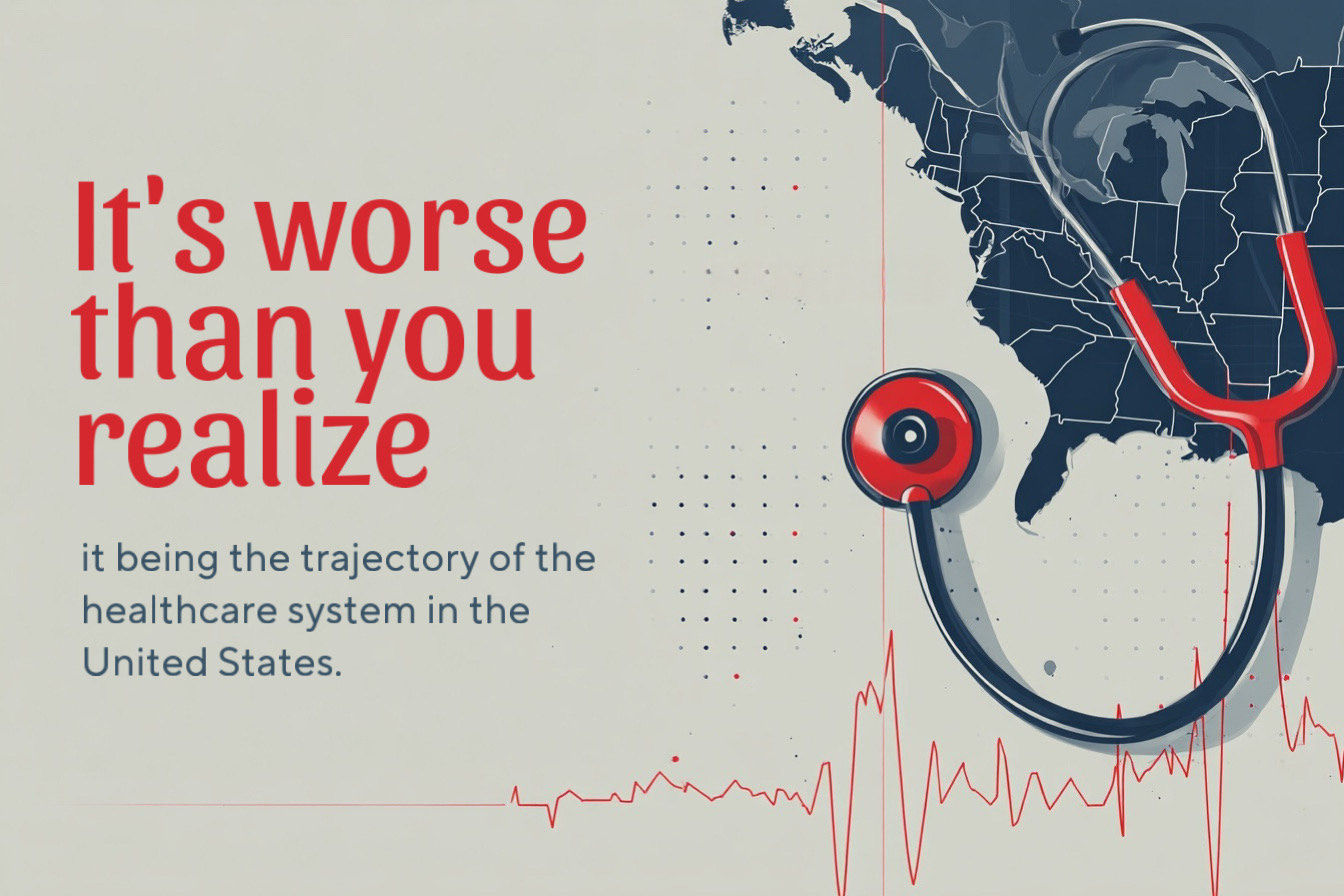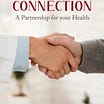It’s much much worse than you realize.
“Going to Hell in a handbasket” in my opinion.
I have though been the beneficiary of 15 hospitalizations (including a major stroke in 1992 at age 38), and seven abdominal surgeries. Due to those experiences, in parallel with my 40-year career as a board-certified emergency medicine (EM) physician, my concerns are not with the quality of healthcare available to US patients.
Rather they are with the fact that access to quality care is not uniformly available and is becoming progressively less available, as dollar-driven decision-making is displacing patient welfare-driven priorities.
Many of us might be unaware of the following litany of documentable facts upon which I base my opening opinion:
Speaking as an Independent voter, and purely as a concerned emergency physician, I’m alarmed by these current and varying estimates on exactly how many “millions of Medicaid patients” will soon be deprived of their health insurance. This should make even the most short-sighted of us realize that this is not equivalent to removing their medical problems and health concerns (there is no acceptable number of millions of us for which affordable necessary healthcare should be made less accessible!) It has been my career long experience that without access to a reliable primary care physician relationship, many uninsured, and even Medicaid-covered, patients end up seeking care in emergence departments (ED). This leads to the already pressing problems of ED overcrowding and fragmentation of care. Statistical reviews show that nearly half of all hospital-associated medical care in the US now takes place in emergency departments.
The current default solution of, “just send them all to the ED” is clearly not working well.
Unsurprisingly, it is exacerbating ED overcrowding to the point where ED patients are oftentimes receiving the totality of their emergency care while fully clothed and sitting in the waiting room. This is a make-do survival adaptation to ED overcrowding, in which ED rooms and staff are occupied by already-admitted-to-the-hospital patients who have no assigned hospital bed available yet, and so they are “boarding” or “holding” in the ED hallways.
This “waiting room medicine” is accompanied by the guidance to “churn patients” (or more colloquially throughout EM to ‘move the meat’ or ‘treat-em and street-em’).
It is a sure-fire recipe for minimizing the chance for any meaningful patient-physician ‘connection,’ while magnifying the chance for a serious misdiagnosis.
My own take is that we in EM became too proficient at our jobs too quickly, thereby convincing much of society that we are an inexhaustible safety net for the healthcare system’s deficiencies.
According to projections published by the AAMC (Association of American Medical Colleges), the United States will face a physician shortage of up to 86,000 physicians by 2036…including shortfalls in both primary and specialty care, while the U.S. population is projected to grow by 8.4%” by that same year.
The reasons for this projected shortfall are multifactorial and predominantly coalesce around the phenomenon of physician burnout.
Currently, many physician specialties, including all of the primary care centered ones, are either at or within shouting distance of 50% of physicians reporting burnout in their profession. My own specialty of emergency medicine is the indisputable league leader with a 60% reported burnout rate.
Additionally, physicians have the highest suicide rate by profession and even more alarmingly medical students are three times likelier to die of suicide than their counterparts in the general population. Discouraging as well is a survey in which 25% of medical students reported considering quitting their studies, with most (61%) planning to “work in roles that do not involve direct patient care, such as public health, research, or business consulting.” Then there are the facts that average medical student debts upon graduation are in the $200-300K range. On top of that they report hearing discouraging feedback about primary care practice from older physicians in primary care practice, consistently one of the lower paying fields of medicine.
It’s all enough to make you want to throw up your hands and exclaim, “We’re doomed! Who is going to take care of us as patients?”
In contrast though, I actually remain optimistic that we can change this trajectory, though I’m far less confident that we will. It will certainly take the combined efforts of physicians and patients in partnership to wrest control of healthcare back out of the hands of the ascendant dollar-driven consumer-provider model favored by business interests (an “all-hands-on-deck, the ship is going down” type of response).
In some ways this process may benefit as much from, or even more by, the efforts of us as patients as can be done by physicians. We physicians can and have been fired for rocking the boat, by expressing concerns about patient care issues.
As patients though we can both vote with our feet, by avoiding hospital systems that undervalue the patient-physician relationship, and also cast our political votes for change agents not beholden to healthcare private equity’s concerns.
As evidence of how ingrained these concerns have become, consider this statement by the CEO of a multi-billion dollar hospital system, with 30 years of experience (emphasis mine), when asked in a healthcare business journal interview:
Question: What’s one conviction in healthcare that needs to be challenged?
Answer: THAT EVERY PATIENT NEEDS A PRIMARY CARE PHYSICIAN. As we start stratifying our patients into distinct populations based on their health needs and develop that insight further into CONSUMER DRIVEN WANTS, we are finding that a substantial sector of the population does not want or need a primary care physician relationship. PEOPLE NEED PRIMARY CARE BUT NOT NECESSARILY A PHYSICIAN RELATIONSHIP.
In researching my book, I found those comments reassuring in confirming that I wasn’t being overly paranoid in my concerns about the corporate takeover of healthcare. Simultaneously though, it was frightening to recognize that ‘business of healthcare’ leaders were no longer reluctant to say the quiet parts out loud.
This suggested that they considered their takeover of healthcare as “mission accomplished, physicians have been effectively sidelined” no longer seen as key in the avoidance of patient suffering and death.
In point of fact though, the exact opposite is true. In just one of the multiple studies with similarly eye-opening conclusions that I describe in more detail in my book, The Healing Connection: A Partnership for Your Health, researchers found a halving of mortality rates in a primary care setting in which “each patient has a primary care clinician who coordinates all care and refers to specialists as needed.”
It is upon that scientific basis that I remain hopeful that we can and should preserve the patient-physician relationship.
About The Author
Drew Remignanti grew up in New Jersey and graduated from Dartmouth College in 1975. After receiving an M.D. from Rutgers Medical School in 1980, he went on to complete an emergency medicine residency program. Dr. Remignanti retired in 2020 after a 40-year career in a number of New England hospitals. Dr. Remignanti has also lived with chronic illness since being diagnosed with ulcerative colitis at age 19. In 1992, he suffered a major stroke which sidetracked his career for five years. During this period, he earned an MPH from the Medical College of Wisconsin and participated in several international public health projects. In 1997, Dr. Remignanti returned to full-time emergency medicine practice. This journey inspired him to write The Healing Connection, which explores how dollar-driven decisions wield too much influence over our medical decisions as patients and, sadly, as physicians as well.
Get a courtesy discount on the paperback edition of The Healing Connection and stay connected by subscribing to his Substack for more insights, stories, and updates straight from the source.







